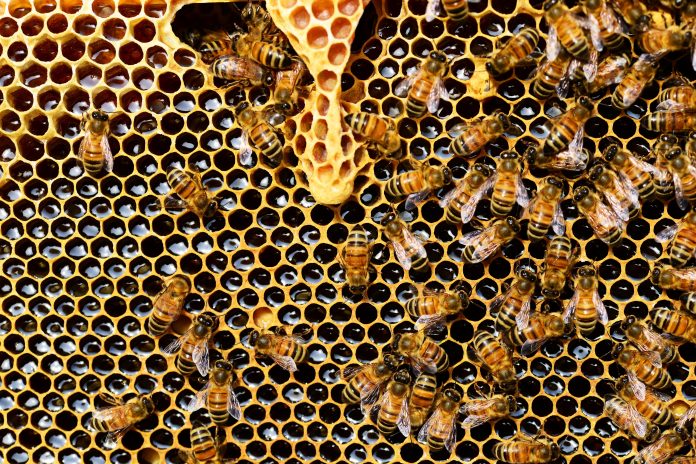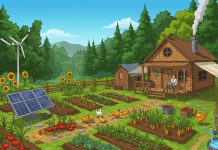Are you dreaming of raising your own bees and enjoying all the rewards that come with it? Whether you’re a homesteader, urban gardener, or small farmer looking to diversify your products and pollinate your plants more efficiently, beekeeping is an activity that brings immense benefits.
If you’re just starting out, it’s essential to know what top considerations must be taken into account before making the leap into keeping bees on your property.
In this blog post, we will discuss the top 6 things to consider when starting a beehive: local regulations, hive type/designs, nectar sources nearby, suitable climates for hives, protection from predators, and finally how much time/energy to invest in tending them.
By taking these factors into consideration in advance of diving in can help ensure the successful implementation of your apiary project!
Choose the Right Location for your Beehive – Consider Sun Exposure, Elevation, and Wind Protection
Choosing the right location for a beehive is incredibly important to ensure its success and productivity. The most important factors to consider include sun exposure, elevation, and wind protection.
A spot with adequate sun coverage during the morning hours is ideal as honey bees will remain at the hive until there is enough heat to fly, while an elevation that allows your hive to catch breezes can help keep it naturally cool during hot days.
Moreover, finding an area mostly sheltered from winds can also prevent disruption in airflow and activity around the hive.
Having a set of criteria that accurately assesses your location of choice against these parameters can help you decide on a suitable site for your beehive.
Buy the Right Beekeeping Equipment – Bee Suit, Smoker, Hive Tool, and Frame Feeder
When it comes to beekeeping, the right equipment is essential. A good bee suit will protect you from stings and keep your clothing clean, while a smoker will help to calm the bees during inspections and other activities.
The hive tool enables you to move frames and manipulate the structure of the hive, and frame feeders provide food and water for maintaining healthy colonies.
Investing in quality beekeeping supplies may be costly on the front end, but it can save money in the long run by minimizing losses from disease or other issues.
With proper care, these items can last many years– all the more reason to choose carefully when purchasing beekeeping gear.
Select the Right Kind of Bees for your Beehive – Italian, Carniolan, or Russian Honey Bees are Popular Choices
When it comes to selecting the right type of bees for your beehive, there are three popular choices that many beekeepers consider: Italian, Carniolan, and Russian honey bees.
Each breed has different characteristics and qualities that make it suitable for different environments and conditions. Italian honey bees are known to be great pollinators but can also be quite defensive and temperamental.
Conversely, Carniolan bees are quieter, more docile, and more gentle with their handling. Meanwhile, Russian honey bees have some of the best traits of both Italian and Carniolan honey bees – they tend to be active without being exceptionally aggressive or flighty like other breeds of honeybees.
Ultimately, you should select the breed that will suit your particular climate and location in order to ensure success in managing your own hive.
Learn About Proper Bee Nutrition – Provide Adequate Food Sources Such as Nectar and Pollen
Providing proper nutrition to honeybees is essential to their well-being and productive hive activities. Bees rely on two primary nutrient sources, nectar, and pollen, to stay healthy and happy.
Nectar provides energy and carbohydrates while pollen comes packed with protein, minerals, vitamins, and lipids. Without adequate food sources of both nectar and pollen, bees will be unable to build their hives properly or produce the honey that we’ve come to enjoy.
Beekeepers need to understand how best to provide for the nutritional needs of their hives so that both the bees and the humans depending on their benefit from a successful relationship.
Understand Queen Rearing and Colony Management- Know When to Add a New Queen or Split a Hive
Queen rearing and colony management are important components of beekeeping. Knowing when to introduce a new queen or split a hive can help prevent disease, create healthier bee colonies and establish active, successful hives.
Introducing a new queen allows the colony to start fresh with an uninfected organism while splitting a hive can be beneficial if it has become overcrowded or non-productive due to pest infestations or diseases.
For successful queen introduction and hive-splitting procedures, proper timing should be taken into account based on season, weather patterns, and general levels of activity in the colony.
Overall, understanding queen rearing and proper colony management helps beekeepers identify when it is appropriate to bring in a new queen or divide hives for long-term prosperity.
Protect your Hives From Pests and Diseases – Monitor for Common Pests Like Mites and Fungi
Making sure to protect your hives from pests and diseases is essential for the success of any beekeeping endeavor. To do this effectively, it is important to continuously monitor the hive population for any signs of common pests and fungi.
The presence of these occurrences can be concerning, as they can quickly cause an infestation if left unchecked.
To help prevent this, regular inspections should be done to spot any problems and address them promptly.
Additionally, examining materials that are moved in or out of the hive can help keep mites and fungi from being introduced into the habitat.
By properly maintaining vigilance over conditions, beekeepers can ensure their hives remain free from any harmful pests or diseases.
Beekeeping is a rewarding hobby that requires dedication and knowledge. The key to successful beekeeping is selecting the right location, assembling the right equipment, selecting the right bees, providing them with proper nutrition, understanding queen rearing and colony management, and protecting your hives from pests and diseases.
With an understanding of all the components of successful beekeeping, you can now take the plunge into this extraordinary activity! Exercise caution when beginning your journey in beekeeping because it can be time-consuming and expensive.
Lastly, research your local regulations to make sure you are abiding by all applicable laws related to beekeeping. Good luck!














